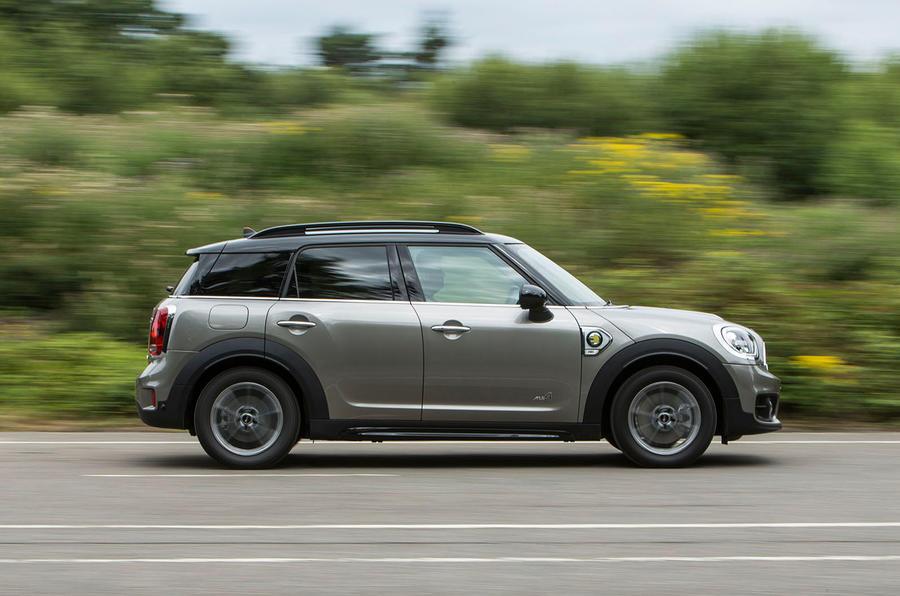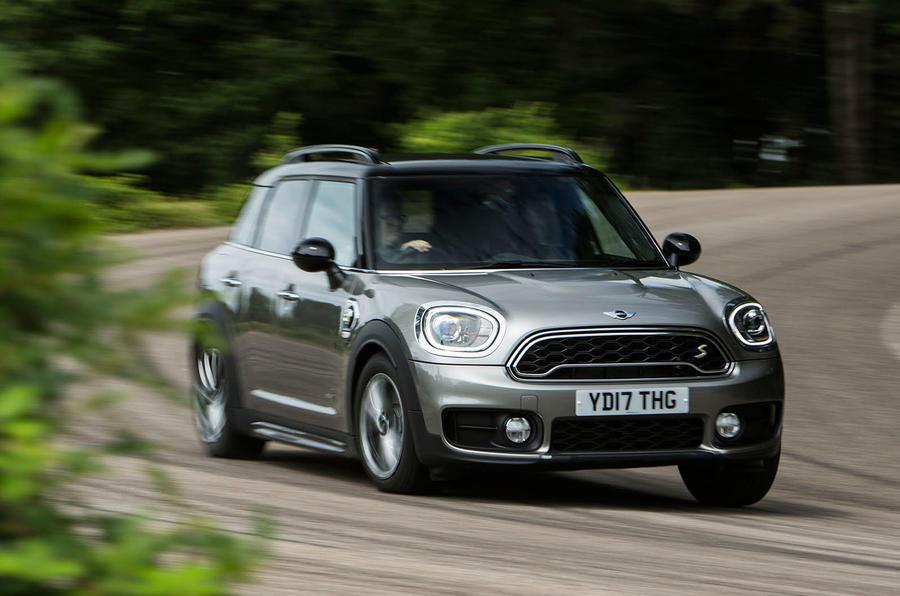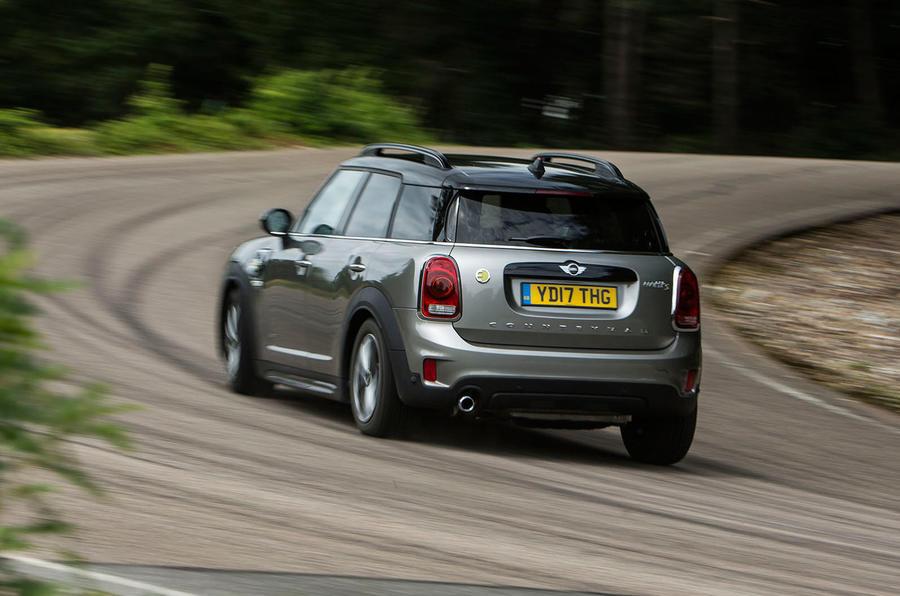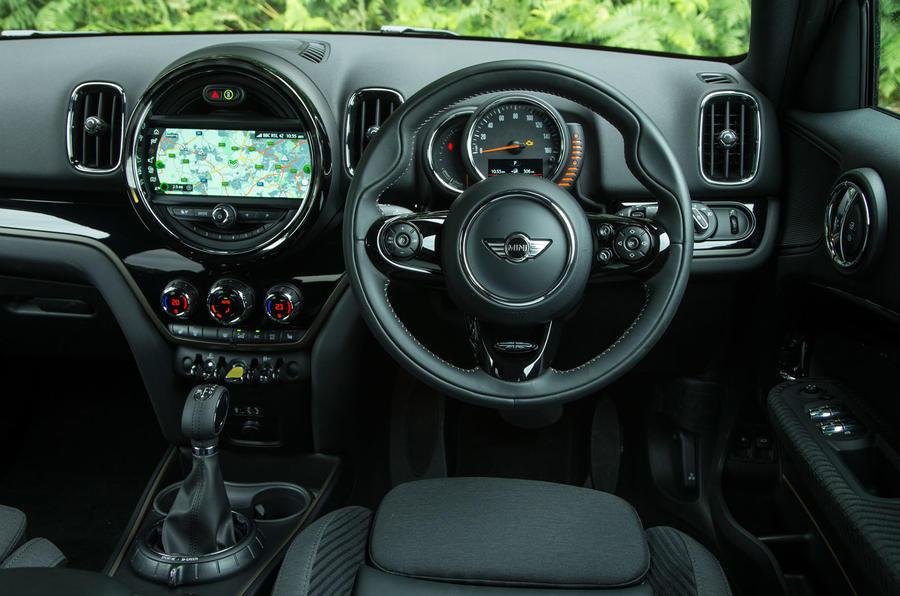Latest Mini is a hybrid 4X4 Countryman
Can a four-wheel drive jacked-up hybrid Mini really work?

Mini Countryman Cooper S E All4 - that name tells you that Mini is trying to cover an awful lot of bases here. There’s the whole Countryman thing, with its hint of the country estate and the great outdoors, in a Mini which was originally designed to be, like, small. Then there’s the Cooper S bit so it should be pretty sporty but, oh hang on, there’s the E, so it should be a power-sipping eco-vehicle and then there’s the All4 with its four-wheel drive and extra weight and power-sapping engineering.
As a new hybrid, this car is giving itself quite a complicated personality. It starts with a 1.5-litre petrol engine in the front, with an 87bhp electric motor for the rear axle, along with the battery pack nearby. With the 134bhp from the front wheels, this in theory gives 221bhp with all four wheels driving.
As ever with electric drive, you get a large part of the thrust from standstill. There’s even more torque, 284lb ft, than the Countryman JCW and that’s meant to be the seriously quick one. On the other hand, compared to a Golf GTE, this Countryman weighs in with another 200kg. Getting on the scales at 1753kg, the Countryman Cooper S E is hardly a lightweight.

Then there’s the higher centre of gravity too. It’s not a major surprise when you throw it into a sharp corner to find that the body is rolling more than you’d like. It seems to take a while to settle down too. And then, if you keep pushing, all the wheels start to get in a lather and let go. The stability control system stops any real lairyness, but this never feels that composed.
But at leas the extra weight, with much of it balanced front to rear, means the ride is better than the standard Countryman. While it’s comfy, the effect overall is that the car doesn’t feel that closely tied down to the road – a fact backed up by a faintly poor braking performance on a wet road.
At lower speeds you won’t mind all this because performance is hard. Just depressing the throttle a bit results in you surging forward instantly. Not ‘without much of a pause’, but properly instantly. That’s the joy of the electric rear axle and the auto transmission at the front locking the engine in a highish gear. A 0-62mph time of 6.7sec shows there’s plenty of go when you need it. At least, there is at lower speeds.

When you reach 78mph the electric motor shuts down. At that point you’re driving a heavy Mini that isn’t terribly powerful. But you can play with the modes to conserve electricity or run entirely on it, and as a short-range electric vehicle, this Countryman E makes a good showing. Less so if you’re planning on pounding along the motorways.
At least driving an electric car these days doesn’t involve that many sacrifices in the cabin. True, the rear seats are set a bit higher and can’t slide to and fro as they used to, and the boot is now 405 litres instead of 450, but the cabin still seems more than adequately spacious for five. And it does feel premium.
There’s plenty of character to look at of course, and indulge yourself with, although we were far from impressed with the conventional dials, since there’s no rev counter and not the clearest indication of what electrical torque is available for use. It makes the car slightly harder to drive than it need be.
The dials give a confusing view of how much power you’re using, from either source. The reality would appear to be a range of about 22 miles purely on electricity, which isn’t bad at all around town, with about 50mpg from the petrol engine up front.
That means low running costs, which help offset the high purchase cost. And then you’ll probably want to add some extras that aren’t there as standard, like LED headlights, the Media Pack and TLC extended warranty and servicing.

Prices start at £31,575 but few will end up paying a figure that isn’t higher than that. For the money you get a polished performer where electric and petrol power work together well. It’s impressive around town as an all-electric car, and it generally feels that big different, which is a good thing.
Dynamically it’s quite compromised, and falls short as a driver’s car. At the same time, if you tend to be on faster roads you’ll really notice – and not in a good way – when the electrical assistance gives up. So overall this is a car as complex as its name suggests. How you feel about that is something you have to work out. Like they say – it’s complicated.
Join our commenting forum
Join thought-provoking conversations, follow other Independent readers and see their replies
Comments
Bookmark popover
Removed from bookmarks